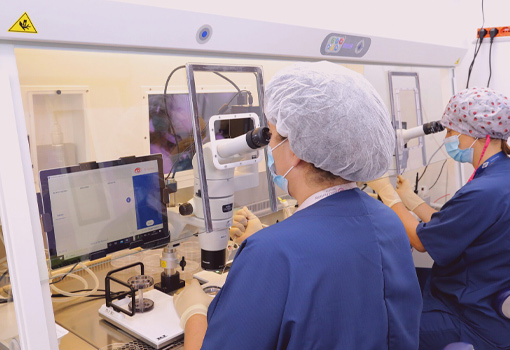
The Effect of Center Variability on Assisted Reproduction: An In-Depth Analysis
Assisted reproduction represents a tangible hope for millions of couples around the world. However, treatment outcomes can vary significantly from one clinic to another, influencing the success of the journey toward parenthood. This variability stems from key factors such as the clinical practices adopted, the technology used, the experience of the staff, and the operational standards followed. Here is an analysis of how these differences impact outcomes and the implications for patients.
Clinical Practices and Treatment Protocols
Each assisted reproduction center follows specific clinical protocols, which can have a considerable effect on outcomes. For example:
- Ovarian stimulation:
The choice of medication and personalized dosage can influence the number and quality of eggs produced.
- Embryo culture techniques:
The use of time-lapse incubators, which allow continuous monitoring of embryo development, often results in better outcomes compared to traditional incubators.
The lack of standardized protocols can lead to discrepancies in results between clinics, making informed decision-making by patients increasingly important.
Technology and Infrastructure
Equipment and infrastructure are fundamental pillars for the success of treatments. Centers equipped with:
- High-resolution microscopes for microinjection
- Advanced cryopreservation systems such as vitrification
- Strict controls over temperature, humidity, and air quality in the laboratory
provide better conditions for embryo development, significantly increasing success rates.
Experience and Training of Staff
The role of embryologists and physicians is crucial in determining outcomes:
- Experienced embryologists:
Their ability to manage complex situations can greatly enhance success rates.
- Continuous training:
Ongoing education on new techniques is essential to maintain high standards of competence.
Operational Standards and Quality
Clinics that follow international standards, such as those set by ESHRE (European Society of Human Reproduction and Embryology) or ASRM (American Society for Reproductive Medicine), demonstrate greater consistency in outcomes due to strict protocols and regular monitoring. These standards offer patients increased safety and transparency.
Variability in Outcomes: The Impact on Patients
Outcome variability is significant, with success rates ranging from 20% to 50% per treatment cycle. For patients, this translates to:
- Emotional challenges:
Repeated failures can be difficult to cope with.
- Financial implications:
The high costs of treatment make it essential to choose a clinic with a proven track record.
How to Reduce Variability
To improve outcome consistency, targeted actions are needed, such as:
- Data sharing:
Publishing transparent statistics on success rates to support patient decision-making.
- Ongoing training:
Investing in the professional development of medical and technical staff.
- International accreditation:
Encouraging the adoption of recognized certifications.
- Collaborative research:
Promoting studies that define best clinical practices.
A Choice That Makes a Difference
Choosing the right assisted reproduction center is a fundamental decision for every couple. Relying on a clinic with high standards, advanced technology, and experienced personnel can significantly increase the chances of success. As research progresses and standardized protocols are adopted, the goal of improving success rates becomes increasingly achievable, offering every couple the possibility of realizing their dream of having a child.






